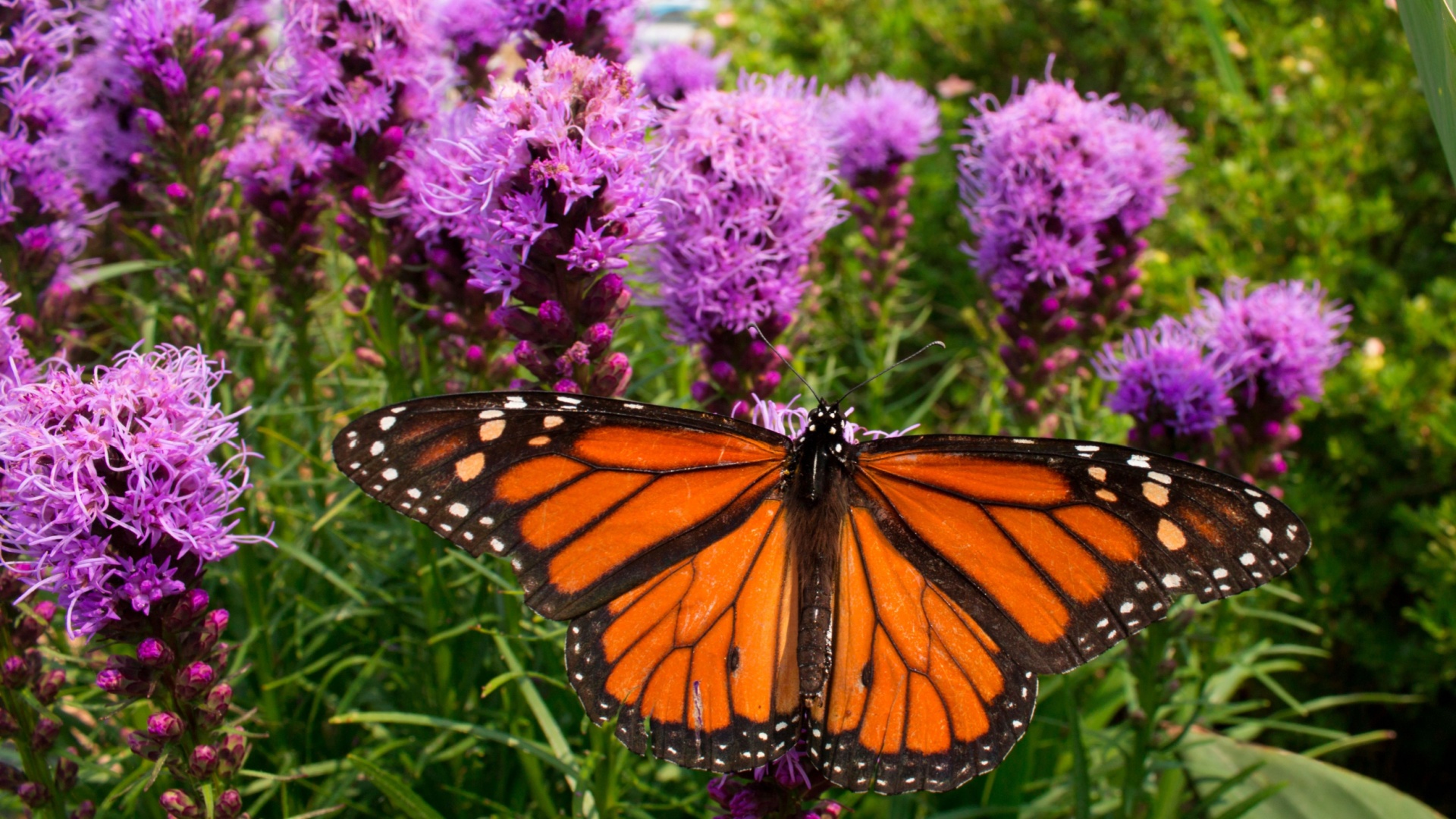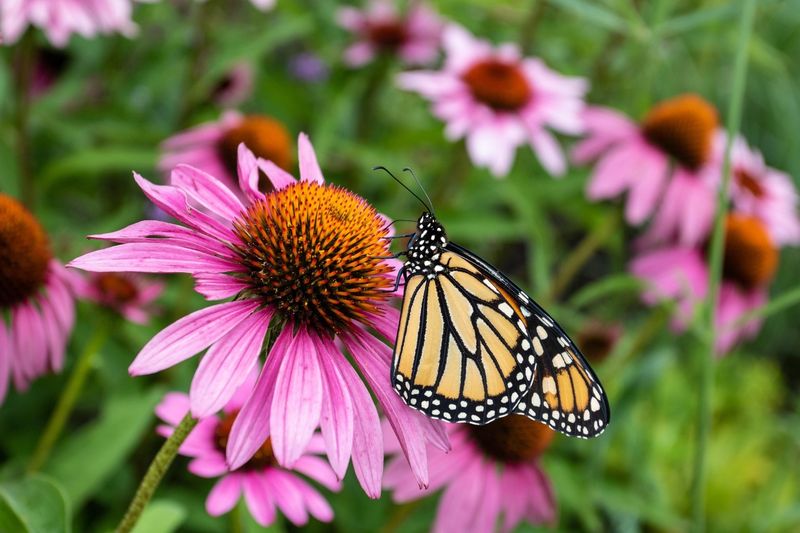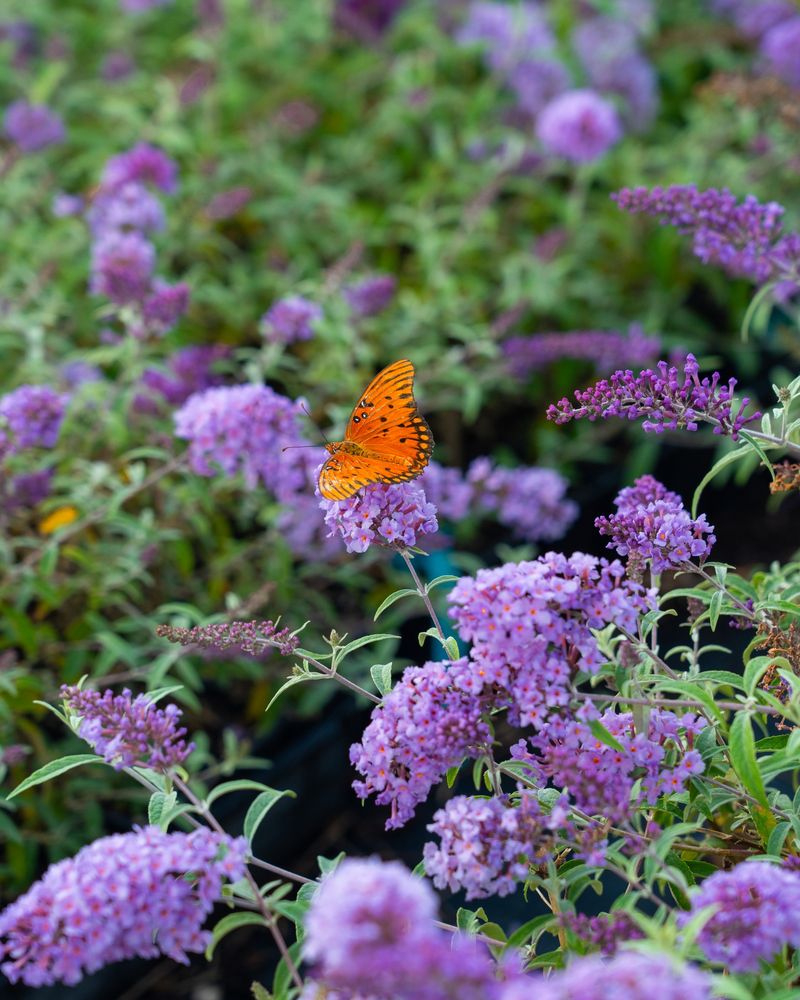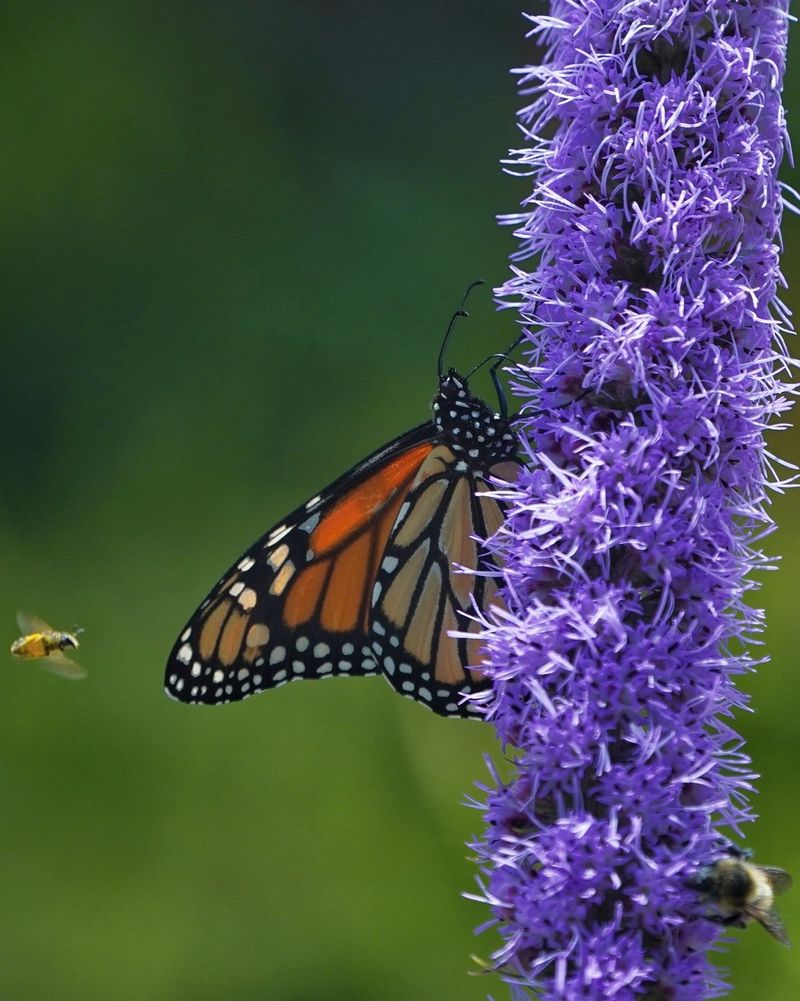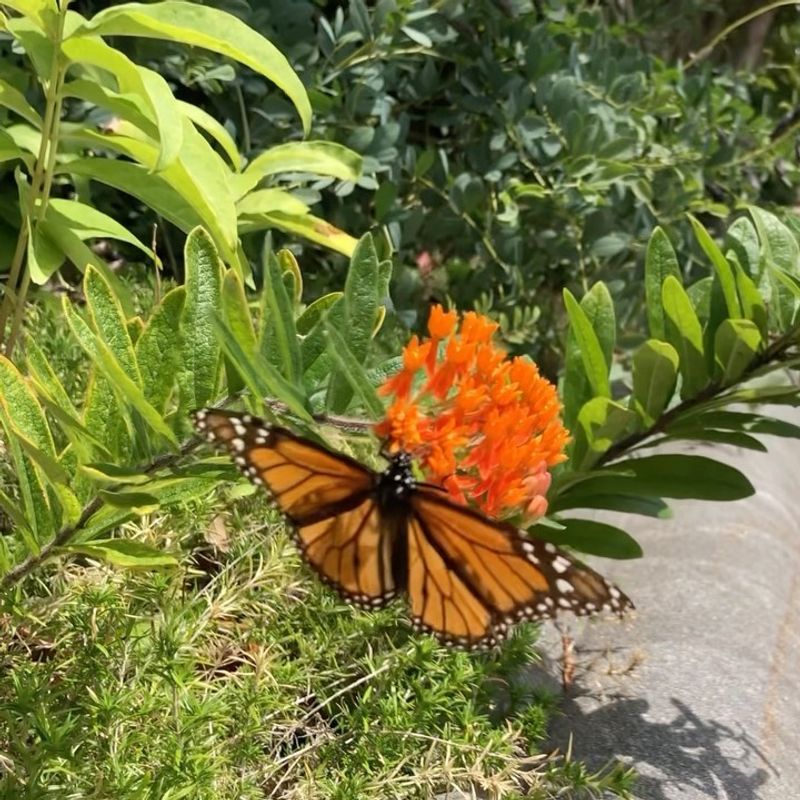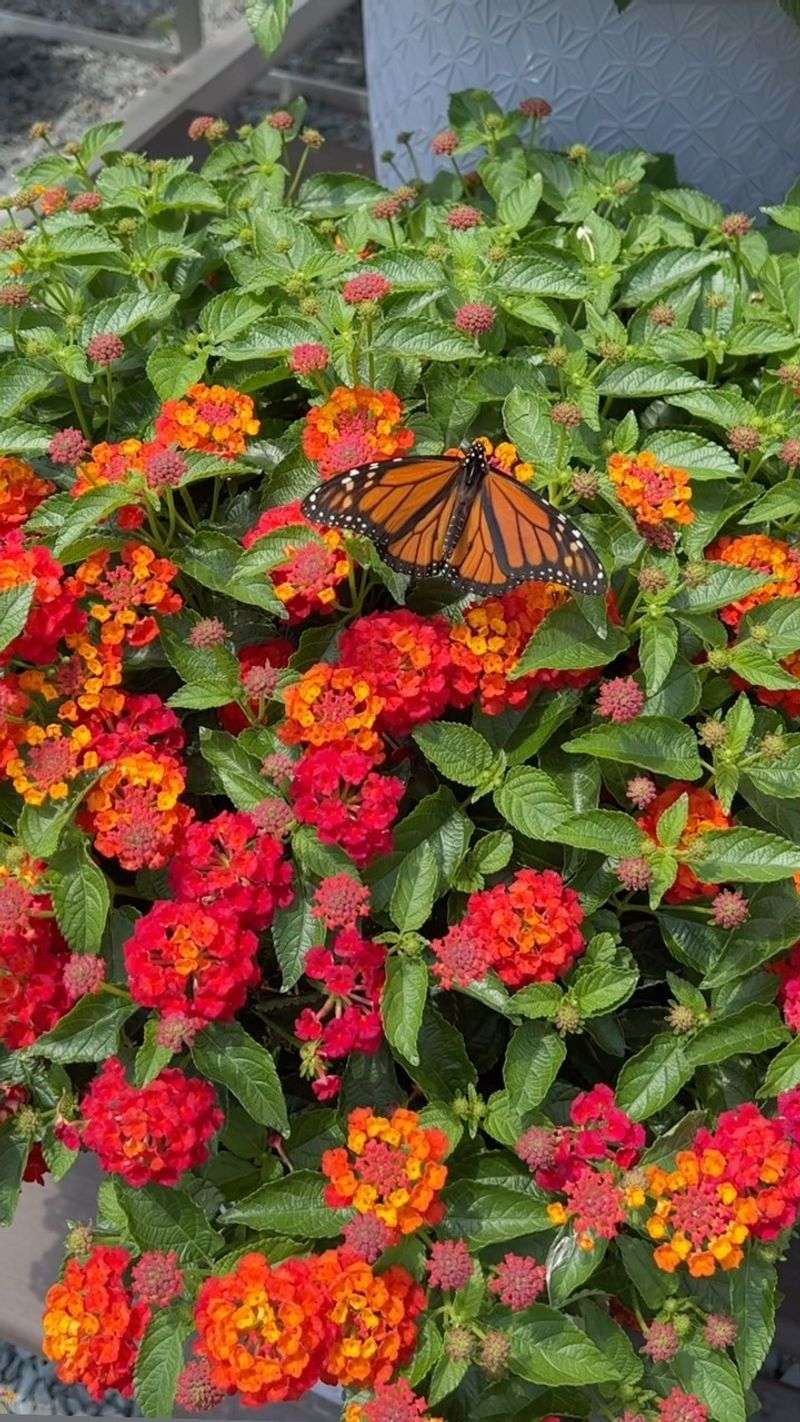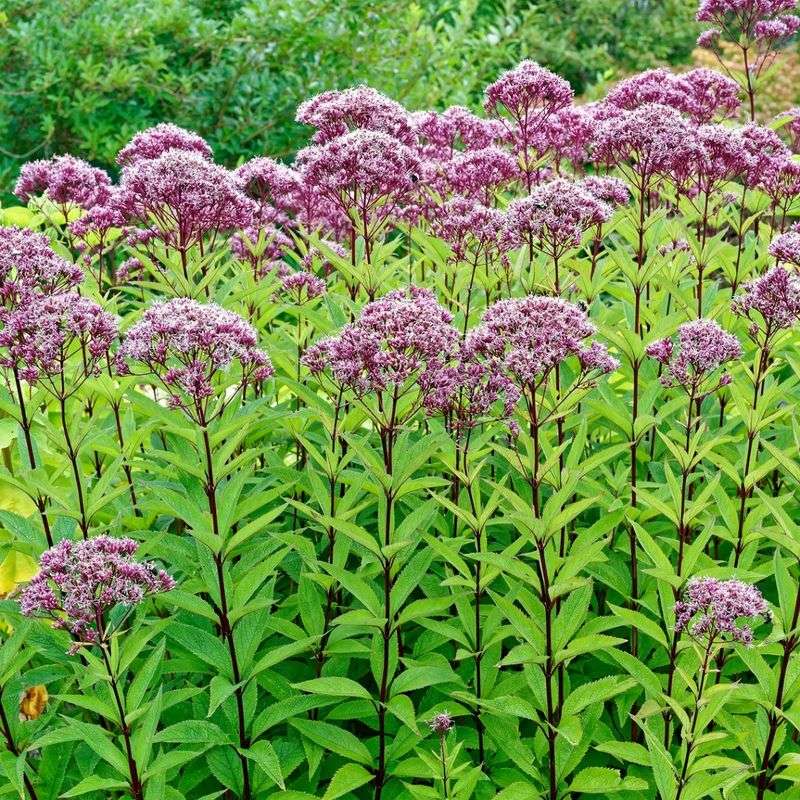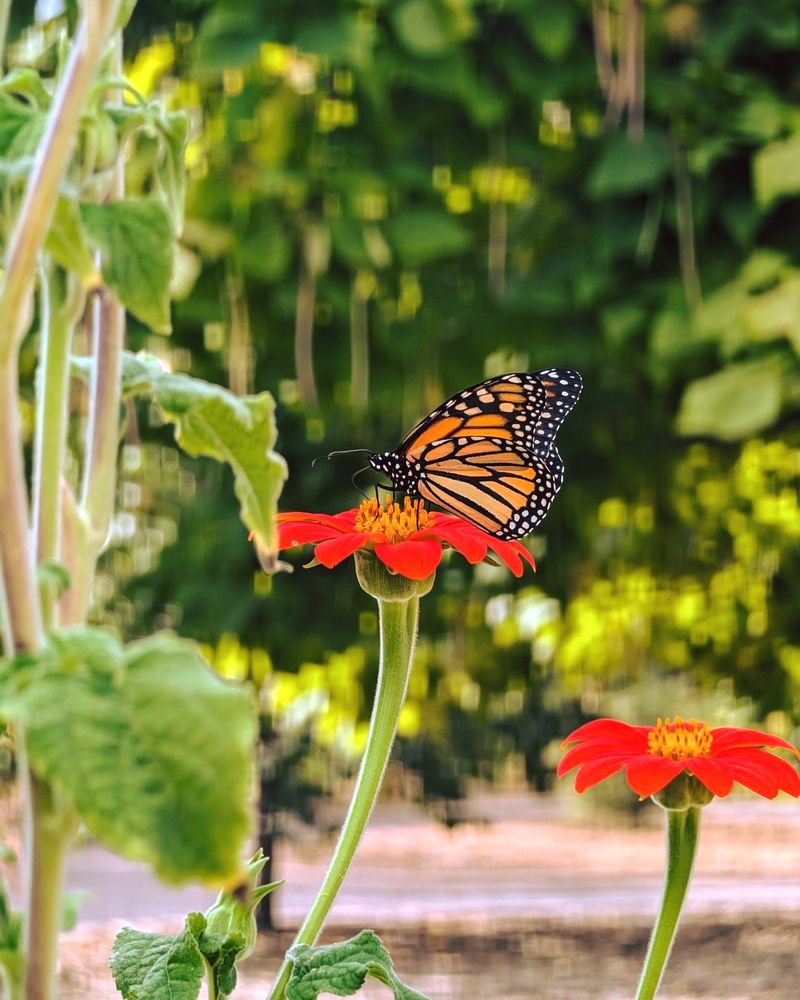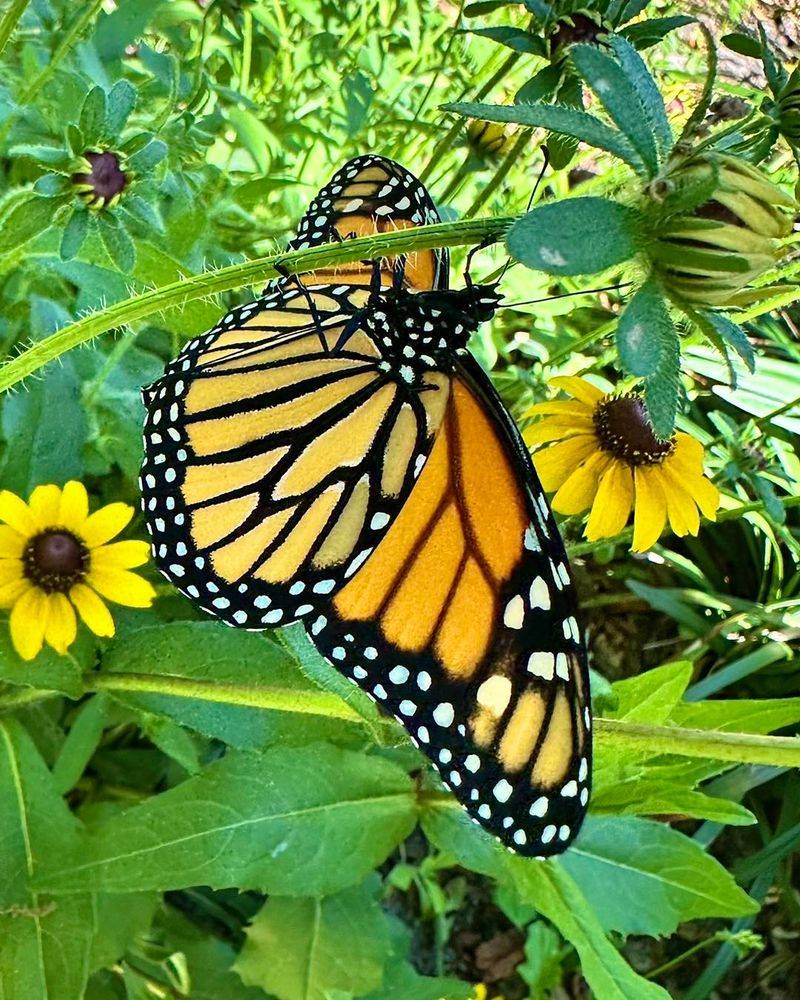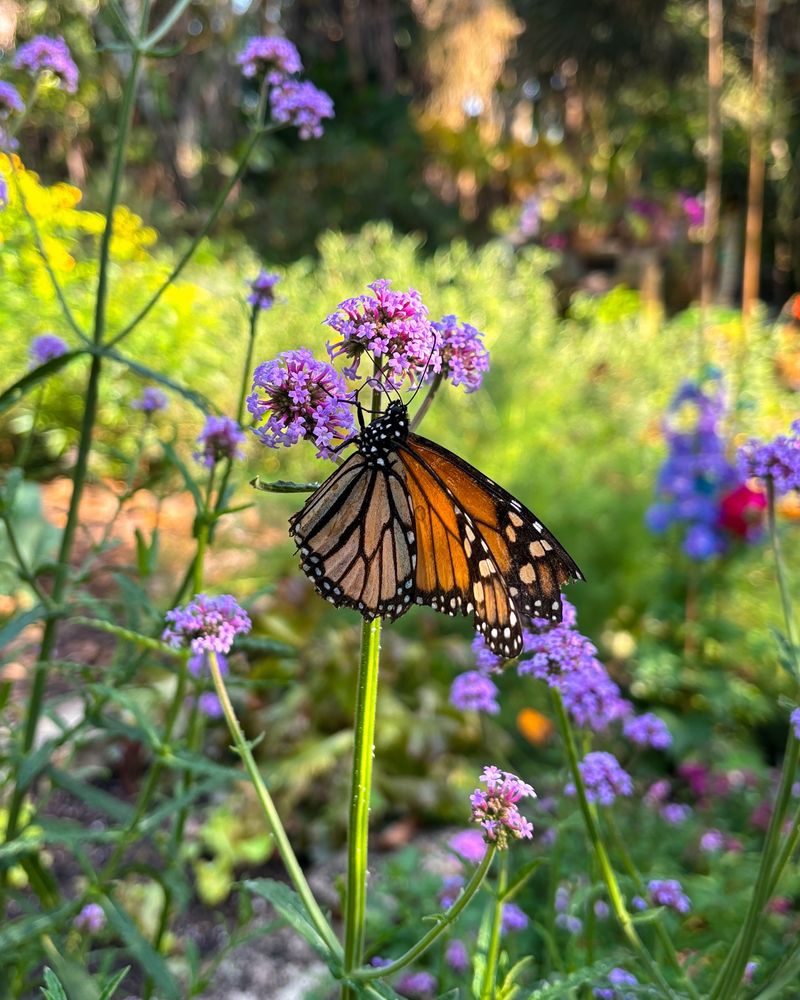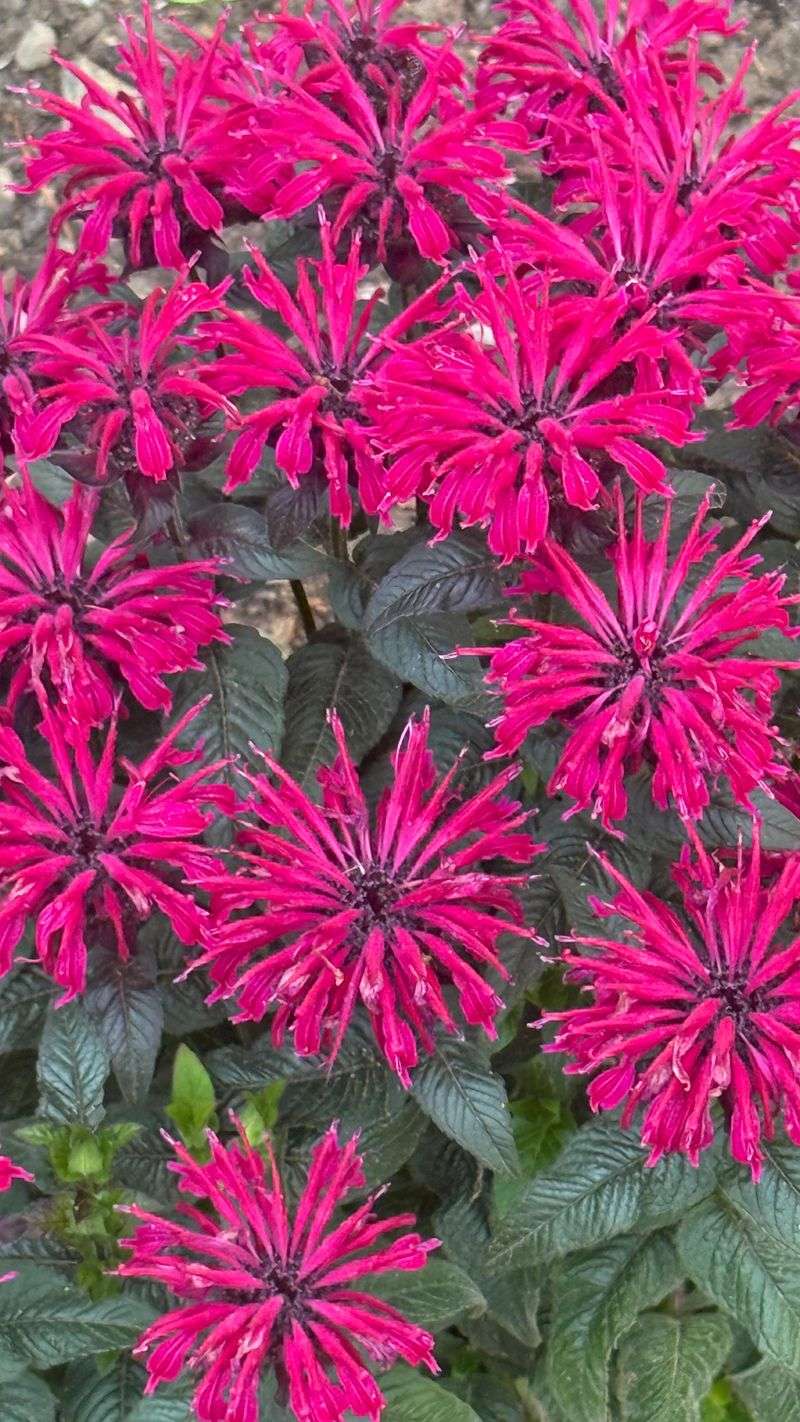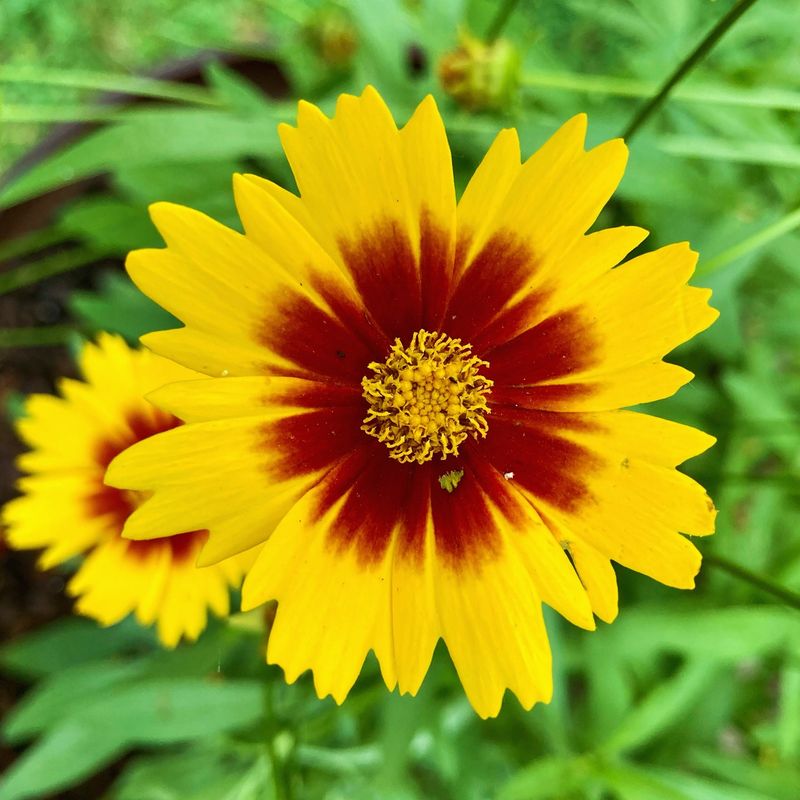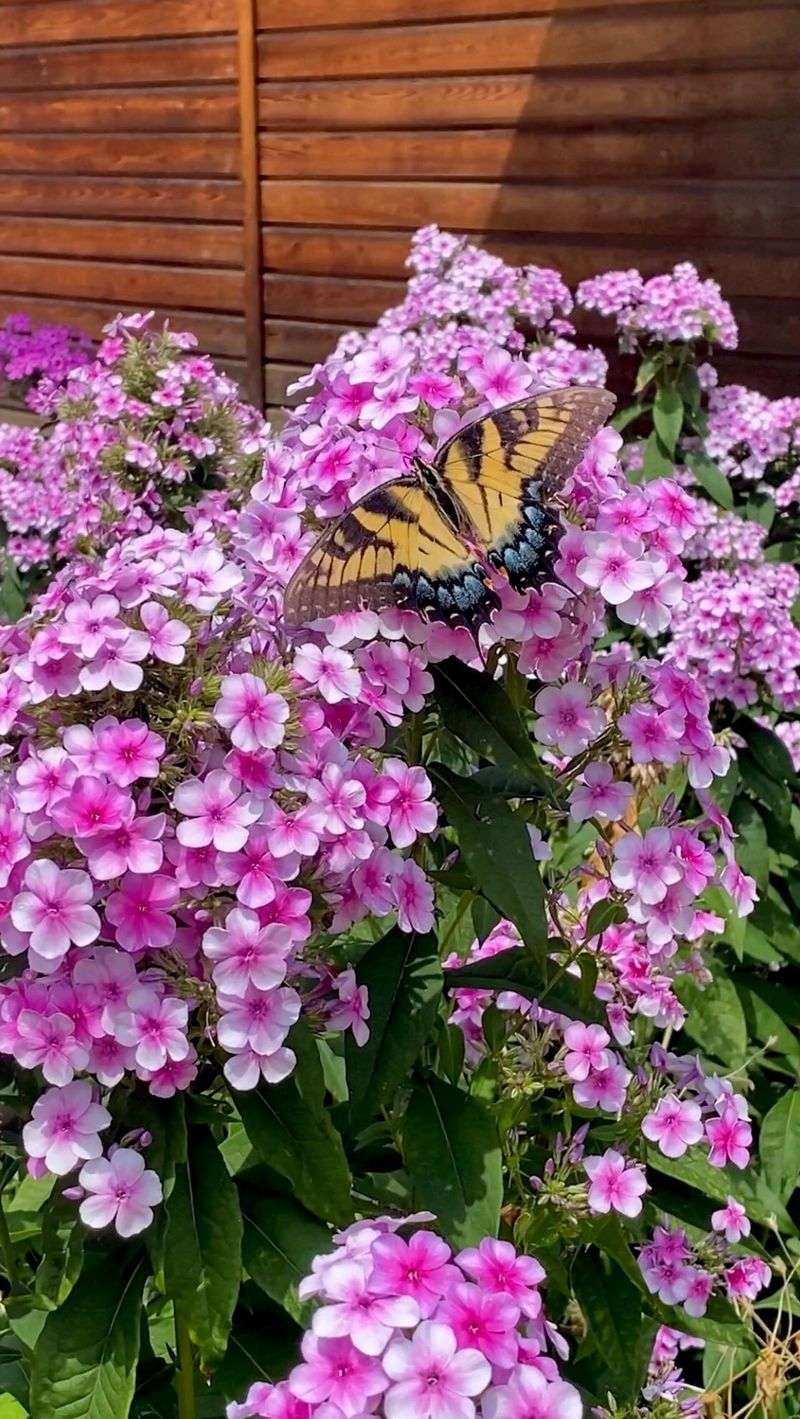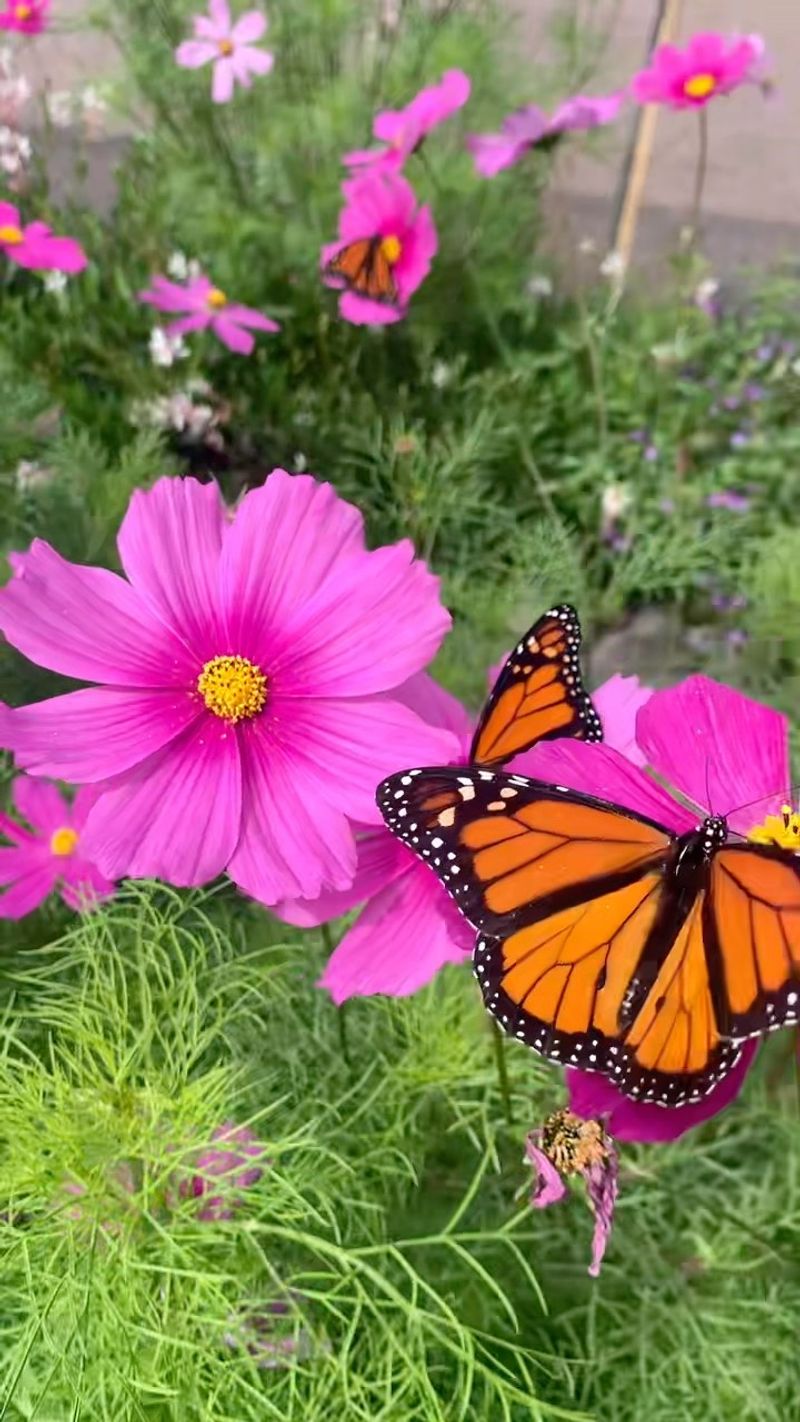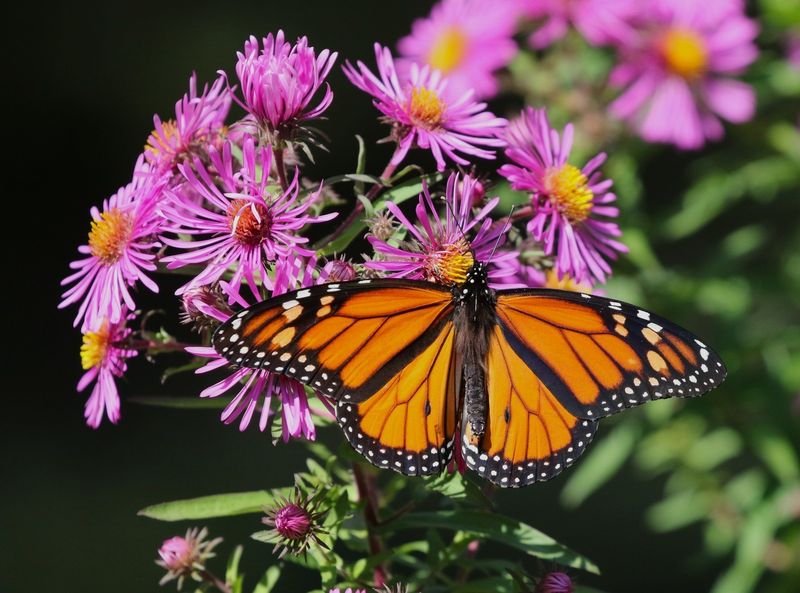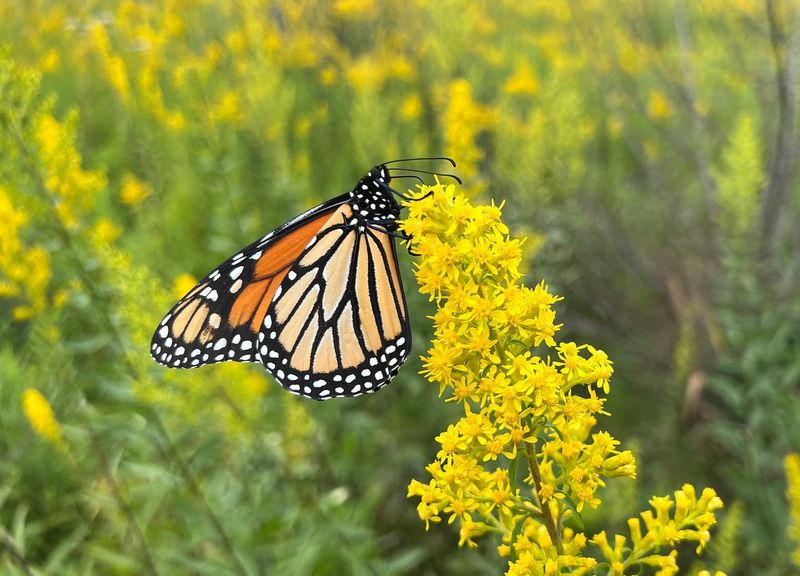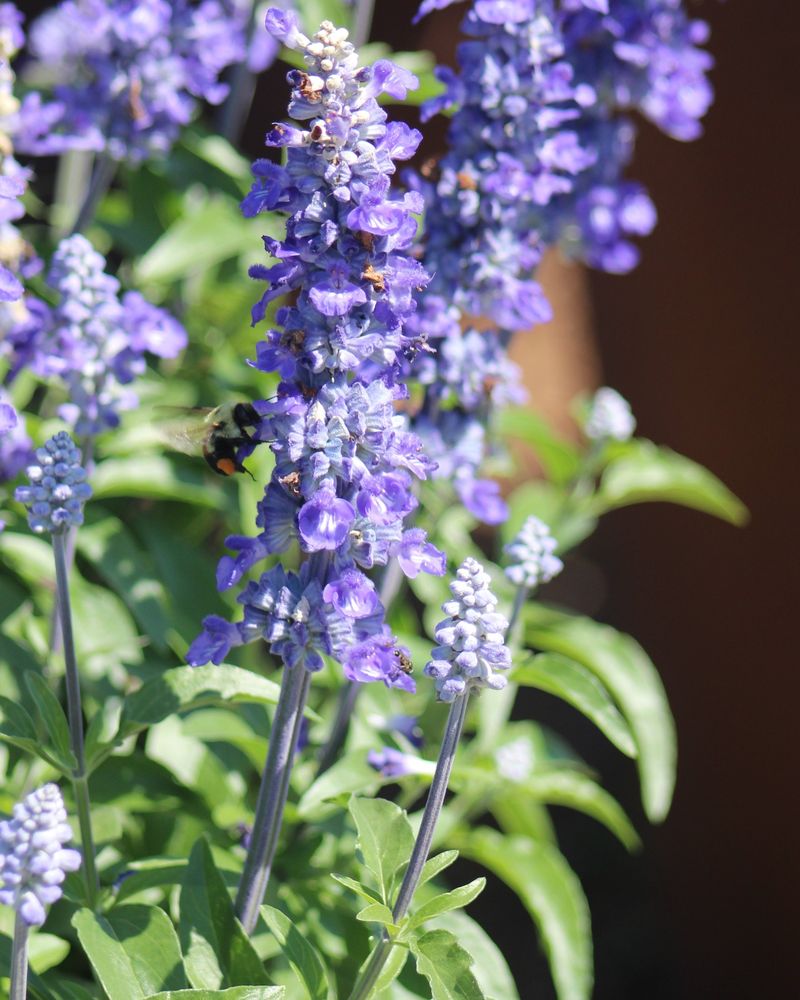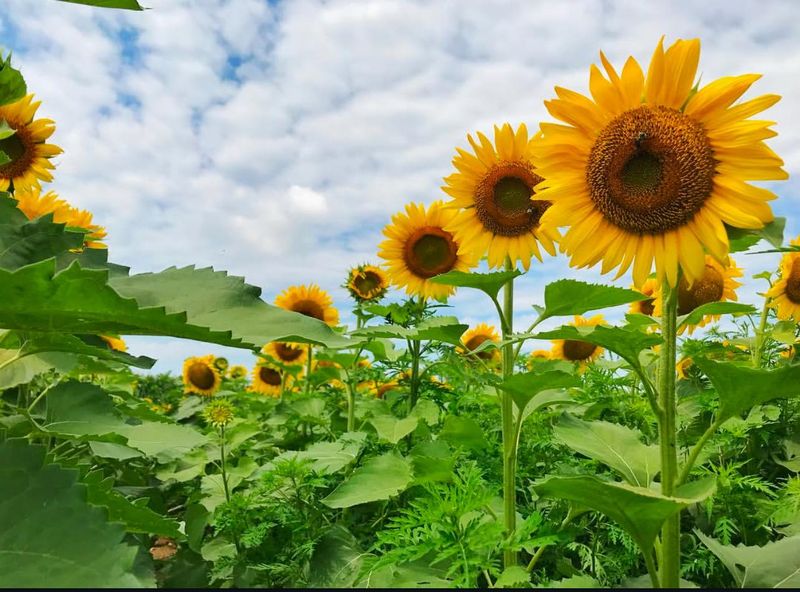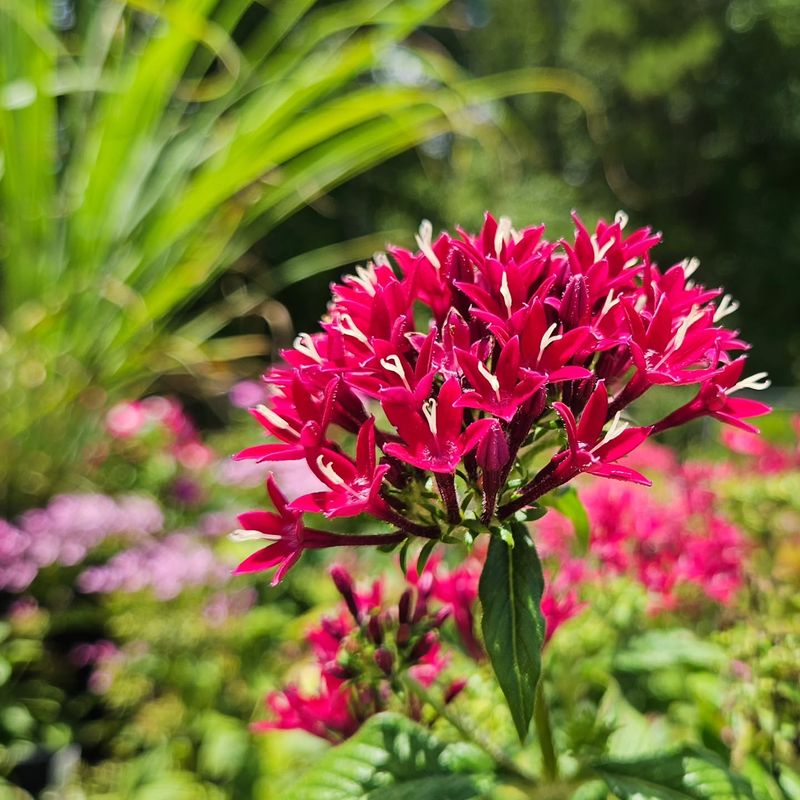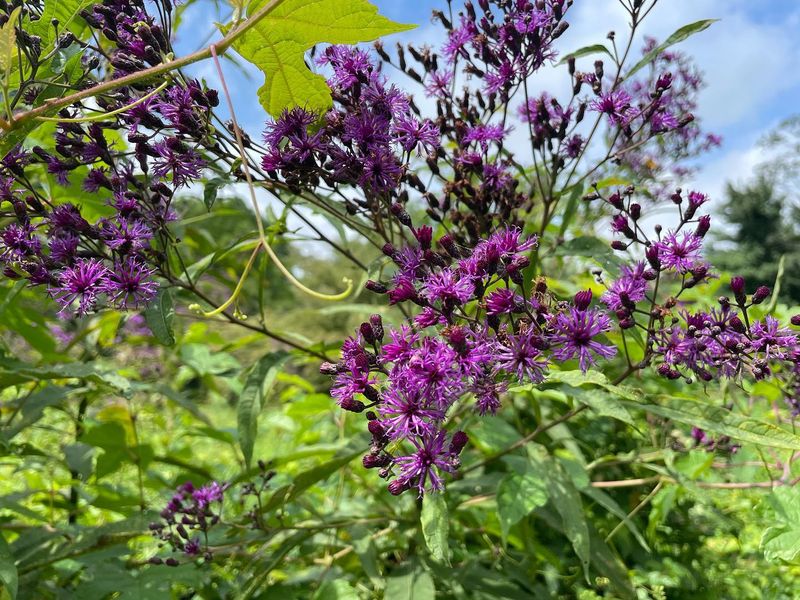Want to turn your garden into a butterfly haven? These 15 summer flowers are tried-and-true favorites that keep butterflies fluttering back for more.
Packed with nectar and nonstop color, these blooms are pollinator magnets. Plus, we’ve added a few bonus picks that butterflies absolutely adore!
1. Purple Coneflower (Echinacea)
Native to American prairies, purple coneflower produces nectar-loaded blooms that butterflies can’t resist. The distinctive cone-shaped centers serve as perfect landing pads for butterflies to rest while sipping sweet nectar.
Once established, these flowers need little care and bloom throughout summer into fall. Monarchs, painted ladies, and swallowtails frequently visit these sturdy perennials. Plant them in sunny spots with well-drained soil for best results. Their drought tolerance makes them perfect for hot summer gardens.
2. Butterfly Bush (Buddleia)
Long, cone-shaped flower clusters on butterfly bush release a honey-sweet fragrance that acts like a butterfly magnet. Available in purple, pink, white, and blue varieties, these shrubs bloom from early summer through the first frost.
Deadheading spent flowers encourages new blooms and prevents self-seeding. In some regions, butterfly bush is considered invasive, so check local guidelines before planting. Position these sun-loving shrubs where you can enjoy watching the butterfly visitors from a window or patio.
3. Blazing Star (Liatris)
Tall spikes of fluffy purple flowers make blazing star stand out in any butterfly garden. The unusual top-to-bottom blooming pattern provides nectar over several weeks, extending butterfly feeding time. Native to North American grasslands, these hardy perennials tolerate poor soil conditions and drought once established.
Monarchs find them particularly irresistible during summer migration. For maximum impact, plant blazing stars in groups of 3-5 bulbs. Their vertical growth habit adds structural interest while serving as butterfly fuel stations.
4. Milkweed (Asclepias)
Monarch butterflies depend on milkweed—it’s the only plant their caterpillars can eat! Beyond being crucial for monarch survival, the star-shaped flower clusters produce abundant nectar that attracts numerous butterfly species.
Several milkweed varieties offer options for different garden settings. Butterfly weed (Asclepias tuberosa) features bright orange blooms, while swamp milkweed (Asclepias incarnata) produces pink flowers in moister areas. Plant milkweed in a sunny location where you won’t mind some caterpillar munching. The butterfly reward is worth the temporary leaf damage!
5. Lantana
Multi-colored flower clusters make lantana a showstopper in summer gardens. Each tiny flower within the clusters contains nectar, creating an abundant food source that butterflies find irresistible. Heat-loving and drought-tolerant, lantana thrives when other plants wilt.
The flowers change colors as they age, often displaying yellow, orange, pink, and red all on one plant. Growing lantana in containers allows northern gardeners to enjoy its butterfly-attracting powers, then bring it indoors for winter. In warm climates, it grows as a perennial shrub.
6. Joe-Pye Weed (Eutrochium)
Reaching heights of 5-7 feet, Joe-Pye weed creates a butterfly feeding station at eye level. The mauve-pink flower clusters appear in late summer when many other nectar sources have faded, making them especially valuable. Despite its name, this native plant isn’t a weed but a beneficial wildflower.
Folklore claims it was named after a Native American healer who used the plant medicinally. Plant Joe-Pye weed at the back of garden borders where its impressive height creates a dramatic backdrop. Butterflies will flock to the flowers while the plant adds architectural interest.
7. Zinnias
Bursting with bold colors, zinnias provide butterflies with easy access to nectar through their open, daisy-like blooms. Growing from seeds to flowers in just weeks, they deliver quick butterfly-attracting results. Available in nearly every color except blue, zinnias range from dwarf varieties to towering 4-foot plants.
Single-flowered varieties attract more butterflies than double-flowered types because butterflies can access the nectar more easily. Cut zinnias for bouquets and they’ll produce even more flowers, creating an endless butterfly buffet. Their long blooming season extends from early summer until frost.
8. Mexican Sunflower (Tithonia)
Fiery orange blooms atop 6-foot stems make Mexican sunflower a dramatic butterfly magnet. Unlike common sunflowers, these produce abundant nectar that particularly attracts monarch butterflies during their late summer migration. Velvety leaves and branching stems create a bushy plant that needs space to spread.
The daisy-like flowers bloom continuously from midsummer until frost if deadheaded regularly. Plant Mexican sunflowers at the back of butterfly gardens where their height won’t block smaller plants. Their vibrant color creates a stunning backdrop while providing critical butterfly nourishment.
9. Black-Eyed Susan (Rudbeckia)
Golden petals surrounding dark centers make black-eyed Susans instantly recognizable and irresistible to butterflies. These native wildflowers bloom prolifically from midsummer through fall, providing weeks of nectar. Extremely adaptable, black-eyed Susans grow in almost any soil type and withstand drought once established.
Their cheerful blooms brighten gardens while feeding painted lady and fritillary butterflies. Plant them in masses for maximum butterfly appeal. The flowers self-seed readily, creating new plants each year without additional work from the gardener.
10. Verbena
Flat-topped clusters of tiny flowers make verbena perfect landing pads for butterflies. The flowers come in shades of purple, pink, red, and white, blooming non-stop from early summer until frost. Low-growing varieties create butterfly-friendly ground covers, while taller types add vertical interest. All types thrive in hot, sunny conditions and require minimal care once established.
Verbena bonariensis, with its tall, airy stems topped with purple flowers, creates a particularly magical effect as butterflies appear to float among the blossoms. Plant them where their delicate stems can be backlit by morning or evening sun.
11. Bee Balm (Monarda)
Spiky, crown-like flowers in red, pink, or purple make bee balm a standout in butterfly gardens. Despite its name, this native plant attracts far more than just bees—butterflies and hummingbirds flock to its tubular florets. Aromatic foliage gives off a minty-citrus scent when brushed against.
In traditional medicine, bee balm was used to treat colds and sore throats, earning it the nickname “Oswego tea.” Plant bee balm in moist, rich soil with good air circulation to prevent powdery mildew. Its spreading habit fills garden spaces quickly, creating butterfly feeding grounds throughout summer.
12. Coreopsis (Tickseed)
Cheerful daisy-like flowers blanket coreopsis plants from early summer through fall, creating a butterfly paradise. The bright yellow, orange, or bicolor blooms stand up to summer heat and humidity without wilting. Extremely low-maintenance, coreopsis thrives with minimal water once established. Regular deadheading encourages continuous blooming, though many newer varieties are self-cleaning.
Plant coreopsis in borders, meadows, or containers where butterflies can easily find them. Their prolific blooms ensure a steady nectar supply for weeks, while their drought tolerance means less work for gardeners.
13. Phlox
Fragrant flower clusters in white, pink, purple, or bicolor make summer phlox a butterfly favorite. The sweet scent attracts butterflies from surprising distances, especially in the evening hours. Tall garden phlox (Phlox paniculata) creates 3-4 foot butterfly towers, while creeping phlox forms butterfly-friendly ground covers. Both types produce nectar-rich flowers that butterflies can’t resist.
Plant summer phlox where you can enjoy its sweet fragrance on warm evenings. Good air circulation helps prevent powdery mildew, keeping the plants healthy and blooming longer for extended butterfly visits.
14. Cosmos
Delicate flowers dancing on slender stems make cosmos a graceful addition to butterfly gardens. Available in white, pink, and deep rose, these daisy-like blooms produce nectar that attracts numerous butterfly species. Growing cosmos from seed is incredibly easy—simply scatter seeds and watch them grow!
Their ferny foliage adds texture to gardens while the flowers bloom abundantly from early summer until frost. Plant cosmos in average to poor soil for best flowering. Rich soil produces lush foliage but fewer of the nectar-rich blooms that butterflies crave.
15. Aster
Star-shaped flowers in purple, blue, pink, or white make late-summer asters critical for fall-migrating butterflies. The daisy-like blooms provide essential nectar when many other flowers have finished blooming. Native aster varieties support local butterfly populations particularly well.
New England aster and New York aster grow naturally in meadows and woodland edges across eastern North America. Plant asters where they’ll receive morning sun but afternoon shade in hot climates. Pinch stems back before mid-July to create bushier plants with more butterfly-feeding flowers.
16. Goldenrod (Solidago)
Arching sprays of tiny yellow flowers make goldenrod a late-summer butterfly magnet. Often mistakenly blamed for hay fever (the real culprit is ragweed), goldenrod actually produces heavy, sticky pollen that doesn’t become airborne. Native to North American meadows and prairies, goldenrod provides essential nectar for butterflies preparing for migration or winter.
Several garden-friendly varieties offer the benefits without the aggressive spreading of wild types. Plant goldenrod alongside purple asters for a stunning color combination that butterflies find irresistible. The yellow-purple pairing creates a classic late-summer garden scene while supporting butterfly populations.
17. Salvia (Sage)
Spiky flower stalks in purple, blue, red, or white make salvias standout butterfly attractors. The tubular flowers contain abundant nectar that keeps butterflies returning throughout summer. Different salvia varieties bloom at different times, so planting several types ensures continuous butterfly visits.
Annual salvias like ‘Victoria Blue’ bloom all summer, while perennial types often have specific blooming periods. Plant salvias in full sun where their bright colors can shine. Most varieties tolerate drought once established, making them perfect for hot summer gardens where butterflies are most active.
18. Sunflower (Helianthus)
Massive flower heads on tall stalks make sunflowers impossible for butterflies to miss. While the common annual sunflower is beloved for its size, perennial sunflower varieties often attract more butterflies with their abundant nectar. Branching varieties produce multiple smaller flowers rather than one giant bloom, creating more feeding opportunities for butterfly visitors.
The continuous blooming habit keeps butterflies returning for weeks. Plant sunflowers along fences or at garden edges where their height won’t shade other plants. Their cheerful faces tracking the sun create garden focal points while serving as butterfly restaurants.
19. Pentas
Star-shaped flowers clustered in rounded heads make pentas perfect butterfly feeding stations. Available in red, pink, white, and lavender, these tropical plants bloom non-stop from early summer until frost. Heat-loving and humidity-tolerant, pentas thrive during the hottest summer months when butterflies are most active.
Their flat-topped flower clusters provide easy landing pads for butterflies to rest while feeding. Grow pentas in containers in northern regions and bring them indoors for winter. In warm climates, they can become perennial shrubs, providing year-round butterfly nourishment.
20. Ironweed (Vernonia)
Intense purple flower clusters atop 7-foot stems make ironweed a dramatic late-summer butterfly beacon. Native to American prairies and meadows, this wildflower provides critical nectar for pre-migration butterfly feeding. Despite its delicate appearance, ironweed earned its name from its tough stems and ability to withstand harsh conditions.
The deep tap root allows it to thrive during summer droughts when butterflies desperately need nectar sources. Plant ironweed at the back of butterfly gardens where its impressive height creates a purple cloud of butterfly activity. Pair with goldenrod for a stunning late-summer color combination.

